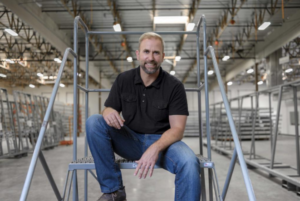AZBigMedia recently published an article about advances in construction technology.
Scott Root, executive director of strategy and innovation for Kitchell, uses a software program called OpenSpace to create a visual representation of the job site using 360-degree cameras. The program uses artificial intelligence (AI) to assign percentage-complete values to the pictures, so subsequent captures can show how much progress has been made since the last capture.
“During the pandemic, we didn’t have our design partners or owners on the job site as often as they normally are. But OpenSpace pushed information to them in real time so they could look at any day and see the progress,” Root notes. “On our side, we can use the AI aspects to understand, for example, when the drywall is going in and what percentage is already in, which falls right into our construction management plans.”
New Ways of Seeing
Virtual reality (VR) has also entered the construction field. Wearing a VR headset allows employees and clients to interact with a 3D model and gain a better feel for the spatial relation of the elements before a single shovel hits the dirt.
“In a traditional design phase, clients see several different iterations of a project. If we can bring it into VR and have them go through iterations in real time, we can get decisions solidified faster,” Root says.
Virtual reality also allows the people who ultimately will be working in a space to influence the design. For example, during the design of a hospital room, medical professionals can use VR to provide feedback on everything from the flow of the room to the placement of electrical outlets.
“They’re not builders or designers, but if you can make them feel as though they’re doing their job within a VR setting and using their expertise to experience how a space works, I think that’s where we get the most value out of these tools,” Root says.
Read the full story at AZBigMedia.

